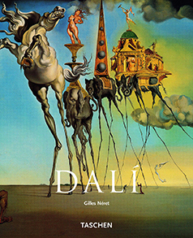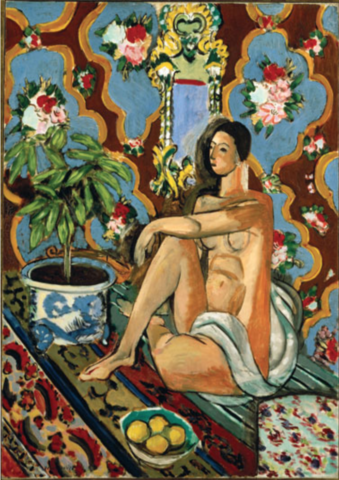Inspiring Sussex
By Jo Phillips
What do Salvador Dalí, Serge Chermayeff, and Eileen Agar have in common? All of them took inspiration from the South East England county of Sussex for some of their most famous works.
The exhibition “Sussex Modernism: Retreat and Rebellion” at Two Temple Place in London, which opens at the 28th of January, examines why these radical artists were drawn to the hills, sea sides and villages of Sussex in the first half of the 20th century. It also explores how artistic innovation ran hand in hand with political, sexual and domestic experimentation in the communities the artists created. The exhibition features over 120 works and is discovering connections between the artists and the modernism they represented. Sussex provided a huge inspiration to many artists, who brought new and unconventional ideas to the region, while others challenged the idea of Sussex as an idyllic escape. The exhibition is in partnership with 9 museums and galleries in Sussex and draws on the richness of collections in the region as well as featuring major loans from across the country. It is curated by Dr Hope Wolf, Lecturer in British Modernist Literature and co-Director of the Centre for Modernist Studies at the University of Sussex. She says that “this exhibition asks what experimental artists, writers and makers of other kinds were doing in Sussex in the early twentieth century. For some, a rural retreat provided an opportunity for escape and alternative living”. The exhibition features several works by different artists who were all inspired by Sussex in one way or another and they all worked with different mediums, such as furniture, watercolours, photography, and architecture.
Salvador Dalí and Edward James:
Two of the most famous surrealist objects ever created are Salvador Dalí’s lobster telephone and the Mae West Lips Sofa, which were made in the 1930s when Dalí was broke and his millionaire friend Edward James offered him a monthly salary for his designs, to keep these objects in his unconventionally decorated home in Sussex.
In 1907 at the age of 5, Edward inherited the West Dean Estate in Sussex and when he came of age in the 1920s he began investing his money and time in supporting artists, craftspeople, dancers and poets.
Edward James/Salvador Dali
Mae West lips sofa, 1938
Felt and wood, 92 x 213 x 80cm, Royal Pavilion & Museums, Brighton & Hove
© Salvador Dalí, Fundació Gala-Salvador Dalí, DACS 2017 and with kind permission from West Dean College – The Edward James Foundation.
Image courtesy of Royal Pavilion & Museums, Brighton & Hove
His determination to push the boundaries by investing in artists brought him into contact with many of the greatest artists of the period, such as Salvador Dalí.
His Lobster Telephone (also known as Aphrodisiac Telephone) is a composite of an ordinary working telephone and a lobster, made of plaster. Four copies of this full colour object were made and one now appears at the Dalí Universe in London; the second can be found at the Museum of Telecommunication in Frankfurt; the third is at the National Gallery of Australia and the final one is at West Dean. Six all-white versions were also produced.

© Salvador Dali, Gala-Salvador Dali Foundation/DACS, London 2016
Museum of Art + Craft
Serge Chermayeff
He was one of the major figures of modernist architecture and design in the UK and the USA because he understood the need to adapt the revolutionary ideas of the continent to the tastes and requirements of a different society. The development of his ideas is traced through his own houses, notably in Bentley Wood in Sussex, which he built in 1937-38 and which immediately became the most admired house in Britain. He collaborated with the German architect Erich Mendelsohn to form their own architectural firm. Together, they created some very important works in the British modernist movement, for example the” De La Warr Pavillion” in Bexhill, Sussex.
John Piper
He was an English painter, printmaker and designer of stained-glass windows and stood out amongst 20th century artists for his appreciation of the British landscape. He found particular inspiration in the landscape of Sussex and Kent. His love for the area began early in his life when he cycled the lanes of Sussex, filling his ‘Journey books’ with drawings, maps and photographs of the locations he discovered. His reputation was built with works like his painting of Coventry Cathedral.
Eileen Agar
She took photographs around the UK and especially in Sussex from the 1930s. Subjects of the photographs include architecture, landscapes, seaside towns and portraits. She also did group photographs with artists such as Man Ray, Paul Eluard and Pablo Picasso. Her most famous photographs from Sussex are called ‘Photograph of Swans taken in Mayfield, Sussex’ and ‘Photograph of the ruins of the Midhurst Priory in Sussex’.
The exhibition will be open from Saturday 28th January – Sunday 23rd April 2017.
It will take place at Two Temple Place, London WC2R 3BD.
For more information, visit their website here.





![Photograph of the ruins of Midhurst Priory in Sussex [1930s-1940s] by Eileen Agar 1899-1991](https://i0.wp.com/centmagazine.co.uk/wp-content/uploads/2017/01/Eileen-Agar-2-Sussex.jpg?resize=580%2C607)





